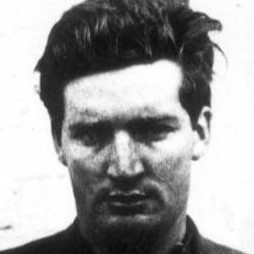
1943 - 1964
Glen Sabre Valance
Summary
Name:
Glen Sabre ValanceYears Active:
1964Birth:
February 11, 1943Status:
ExecutedClass:
MurdererVictims:
1Method:
ShootingDeath:
November 24, 1964Nationality:
Australia
1943 - 1964
Glen Sabre Valance
Summary: Murderer
Name:
Glen Sabre ValanceStatus:
ExecutedVictims:
1Method:
ShootingNationality:
AustraliaBirth:
February 11, 1943Death:
November 24, 1964Years Active:
1964Date Convicted:
September 17, 1964bio
Born on February 11, 1943, as Graham Paul Fraser, he later changed his name to Glen Sabre Valance as a teenager, inspired by the anti-hero in the 1962 western film The Man Who Shot Liberty Valance. His name change symbolized a turn toward rebellious self-identification and perhaps a foreshadowing of deeper personal unrest.
Valance’s early life was deeply traumatic. According to his stepsister, Lillian Clavell, he suffered severe physical and sexual abuse, both at home and in various boys' homes and orphanages. After being left in the care of his grandmother during his early childhood, he was returned to his mother following her death. Clavell claimed that their mother was abusive to an extreme: burning his hands on the stove, smashing his face through glass, and even threatening to kill him with a knife for petty theft.
murder story
By 1964, Valance had grown increasingly resentful toward his employer, Richard Strang, a 37-year-old station owner. Tensions were high over wages and theft accusations. Valance felt wronged by Strang, who had accused him of stealing and even humiliated him by reading private diary entries aloud in front of co-workers. To Valance, this humiliation became the final trigger.
In the early morning hours of June 16, 1964, Valance armed himself with a rifle and returned to Koonroon Station. He first tied up three other station hands, rendering them helpless. Then he entered the bedroom where Richard and Suzanne Strang were asleep. Without warning, he fatally shot Richard in his bed. What followed was even more horrific: Valance raped Suzanne, who lay beside her husband’s lifeless body. He spared the couple’s two young children, aged one and two, who were asleep in the same house.
After the attack, Valance fled the scene in a car, heading toward Adelaide. Meanwhile, Suzanne managed to alert authorities. A roadblock near Murray Bridge led to his swift capture that same day. The rifle used in the crime was found in his vehicle.
At trial, Valance attempted an insanity defense, claiming he had unresolved grievances with Richard Strang, including being sacked after theft allegations and Strang's alleged role in his car’s repossession. The jury was not convinced.
On September 17, 1964, Chief Justice Sir Mellis Napier sentenced Valance to death. His appeal to the Supreme Court of South Australia was dismissed on October 9, and a final attempt to seek leave to appeal to the High Court of Australia was rejected on November 9.
According to his stepsister, Valance became resigned to his fate, stating: "No more appeals. Let me go. I can't live with what I’ve done." Public opinion, which initially leaned toward mercy, shifted decisively after the rape was made public. Calls for clemency died out.
On the morning of November 24, 1964, Valance was hanged at Adelaide Gaol, in a facility known as the Hanging Tower, which had been fitted with gallows in 1950.